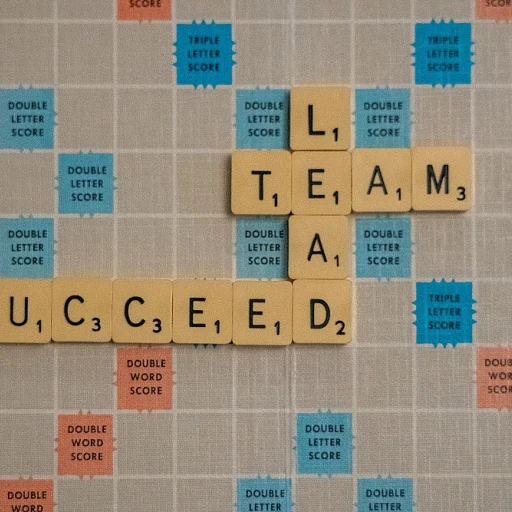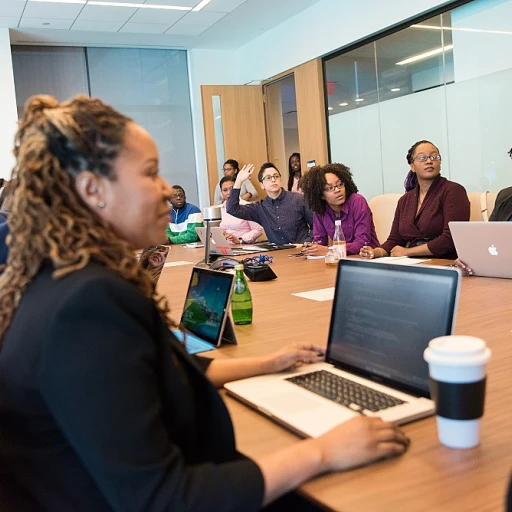Understanding Succession Planning
The Foundation of Future Success
Succession planning is an essential strategy for any company looking to thrive in the competitive business landscape. It's more than just a management tool; it's an investment in the long-term success and stability of your organization. By ensuring that key roles within your company are constantly being developed, you create a robust framework for growth and sustainability.
When a company effectively engages in succession planning, employees feel valued and recognized as integral parts of their team. With thoughtful preparation, welcoming new hires becomes more than just a procedural step—it evolves into a welcoming class where everyone feels included and aligned with the company culture. This occurs when the right balance between identifying potential leaders and offering welcome gifts that make them feel part of the community is achieved.
Welcoming a new hire with a comprehensive employee welcome kit or a simple welcome gift like quality water bottles, stainless steel products, or branded baseball caps conveys a sense of belonging from their first day. These gestures, while simple, help to establish a connection with the team and make new employees feel appreciated and excited about their role.
Moreover, this process goes hand-in-hand with identifying key roles and talent, which is critical in succession planning. By proactively mapping out talent pipelines and development paths, companies can ensure that every employee will find opportunities to grow and contribute, while the company continuously moves towards achieving its goals.
Incorporating these elements not only strengthens employee engagement but also positions the company to quickly adapt to changes, thereby enhancing its resilience and competitive edge. As a result, everyone benefits from a forward-thinking approach to workforce planning and personal development, while ensuring the company's future viability and success.
Identifying Key Roles and Talent
Identifying Critical Positions and Talent
Succession planning is not just about filling vacancies; it's about strategically identifying the key roles within your company that are crucial for maintaining business continuity and growth. Understanding which positions are vital helps in creating a robust plan that ensures the right talent is ready to step up when needed. This proactive approach not only safeguards your company’s future but also enhances its resilience.
To effectively identify these critical roles, consider the following:
- Assess the Impact: Evaluate the impact each role has on the company's operations and long-term goals. High-impact roles are often those that directly influence the company's strategic direction or revenue streams.
- Analyze Current and Future Needs: Look at the current organizational structure and project future needs. This helps in understanding which roles may become more significant as the company evolves.
- Engage with Leadership: Collaborate with leaders across departments to gain insights into which positions they view as essential. Their perspectives can provide a deeper understanding of the company's needs.
Once key roles are identified, the next step is to pinpoint the talent within your team that has the potential to fill these positions. This involves evaluating employees based on their skills, performance, and potential for growth. A well-defined process for identifying potential leaders not only helps in succession planning but also makes employees feel valued and appreciated, as they see a clear path for their career progression.
Incorporating this approach into your company culture can be as refreshing as a welcome kit for new hires. Just as a thoughtfully curated welcome gift box, complete with items like stainless steel water bottles or baseball caps, makes new employees feel appreciated and part of the team, a transparent succession plan can have a similar effect on your current workforce. It shows that the company invests in its people and is committed to their growth.
Ultimately, identifying key roles and talent is about aligning your succession planning with the company’s strategic objectives, ensuring that you have the right people ready to lead when the time comes. This alignment helps in creating a seamless transition that benefits both the company and its employees, much like the thoughtful gifts that make new hires feel welcome and valued from day one.
Developing a Talent Pipeline
Cultivating Future Leaders in Your Organization
Creating a seamless transition when new hires join your team is essential, and part of that includes developing a robust talent pipeline. A well-thought-out succession plan hinges on the ability to identify and nurture potential future leaders who can uphold the company culture and progress.
Start by evaluating your new employee welcome process. Do employees feel valued and supported from the get-go? A thoughtful welcome gift, such as an employee welcome kit containing items like water bottles or baseball caps, can help integrate new members smoothly into your team.
Developing a talent pipeline also involves providing opportunities for growth and learning. Implement onboarding programs that do more than just cover the basics; they should truly help hires acclimate. Think beyond the traditional welcome gift box and consider offering professional development resources. This might include access to online courses, workshops, or mentorship programs. The aim is for employees to feel empowered and equipped to advance within the company.
It's also beneficial to employ a systematic approach when filtering and identifying future leaders. By evaluating employees' performance and potential regularly, you can make informed decisions about who might be suited for key roles in the future.
Furthermore, prioritize transparent communication regarding opportunities for progression. This transparency not only encourages employees to embrace their roles with enthusiasm but also fosters loyalty. In doing so, you build a more cohesive and committed workforce that will love to grow with your organization.
The price of investing in your employee's development often pales in comparison to the benefits of having a motivated, forward-thinking team. For more insight into crafting a robust succession strategy, consider exploring The Ultimate Guide to Creating a Succession Plan.
Implementing Development Programs
Strategic Initiatives for Employee Development
In succession planning, it’s not only about identifying key roles but also focusing on how to develop the talent to fill these roles effectively. Implementing development programs is a crucial step in ensuring that your team is prepared for future opportunities and challenges. Here is how a thoughtful implementation can contribute to a successful succession plan:
- Personalized Development Plans: Tailor training and growth opportunities to meet the individual needs and aspirations of each employee. This personalized approach helps employees feel valued and appreciated within the company culture, fostering a stronger sense of belonging.
- Mentorship and Coaching: Pair potential leaders with mentors to provide guidance, sharing invaluable knowledge and experiences. This not only helps in developing their skills but also brings the team closer, akin to a gift that keeps on giving.
- Continuous Learning Opportunities: Offer classes and workshops where employees can expand their skills. From mastering new technologies to understanding team dynamics, these initiatives will help in creating a robust talent pipeline.
- Feedback Mechanism: Establish regular reviews where employees can get constructive feedback on their performance. These sessions can act as a welcome gift of insight, where employees learn what they excel at and where they could improve, thus polishing their leadership potential.
- Real-World Experience: Provide employees with stretch assignments or rotations across departments. Such strategic exposures can be more effective than theoretical ones, enhancing their readiness for future roles.
Equipping your team with the necessary skills and knowledge not only prepares them for internal promotions but also enhances overall employee satisfaction and retention. When employees realize they are part of a thoughtful succession plan, they feel more like integral members of the company’s future, just as a new hire feels included upon receiving a carefully curated welcome kit.
Evaluating and Adjusting Succession Plans
Regular Review and Adjustment
To ensure that your succession planning remains effective and aligned with your company’s evolving needs, it is crucial to regularly evaluate and adjust your plans. This continuous process helps in identifying any gaps or emerging needs within your team, ensuring that your succession plan is not just a static document but a dynamic strategy that evolves with your company.
Feedback from Stakeholders
Incorporating feedback from various stakeholders, including employees, managers, and HR professionals, can provide valuable insights into the effectiveness of your succession planning. This feedback can highlight areas where employees feel valued or overlooked, helping refine the plan to better meet the needs of your team and enhance the overall company culture.
Monitoring Development Programs
As you implement development programs, it’s important to track their progress and effectiveness. This involves assessing whether the programs are helping employees acquire the necessary skills and competencies to fill key roles in the future. By doing so, you can ensure that your talent pipeline remains robust and ready to meet the company’s future challenges.
Adjusting to Market Changes
The business environment is constantly changing, and so should your succession plans. Stay informed about industry trends and shifts that may impact your company. This awareness allows you to adjust your succession strategies to remain competitive and ensure that your team is equipped to handle new challenges.
Integrating Feedback into Onboarding
Feedback from the succession planning evaluation can also be integrated into your onboarding process. By understanding what new hires value and how they perceive their welcome gifts, welcome kits, or any hire welcome initiatives, you can tailor these elements to enhance their initial experience with the company. This integration helps new employees feel valued and part of the team from day one, reinforcing a positive company culture.








